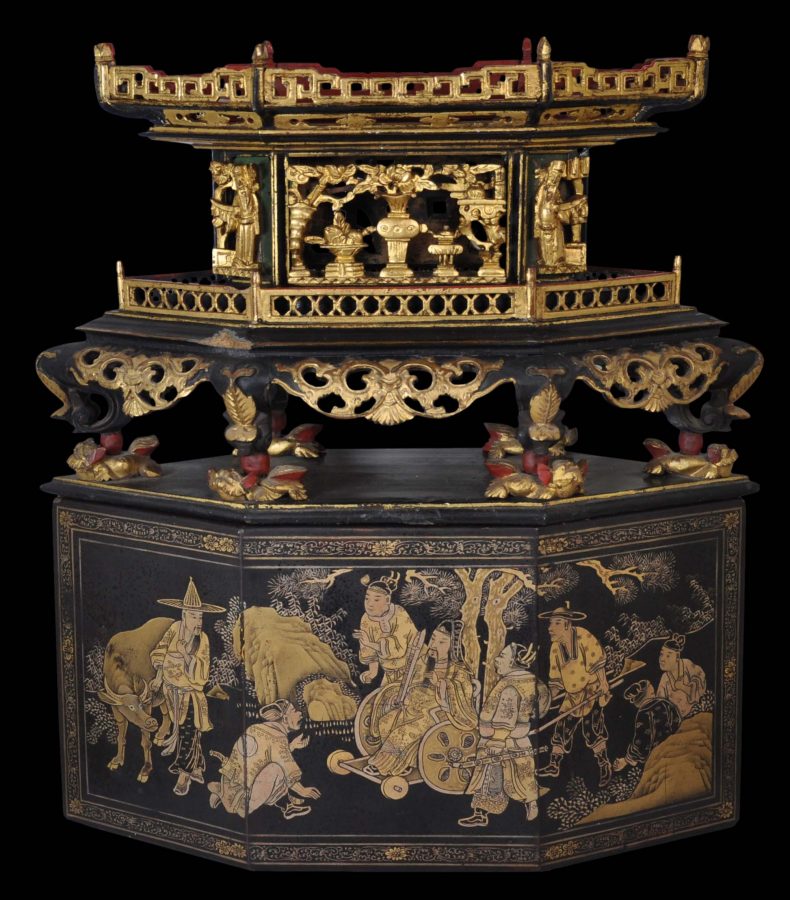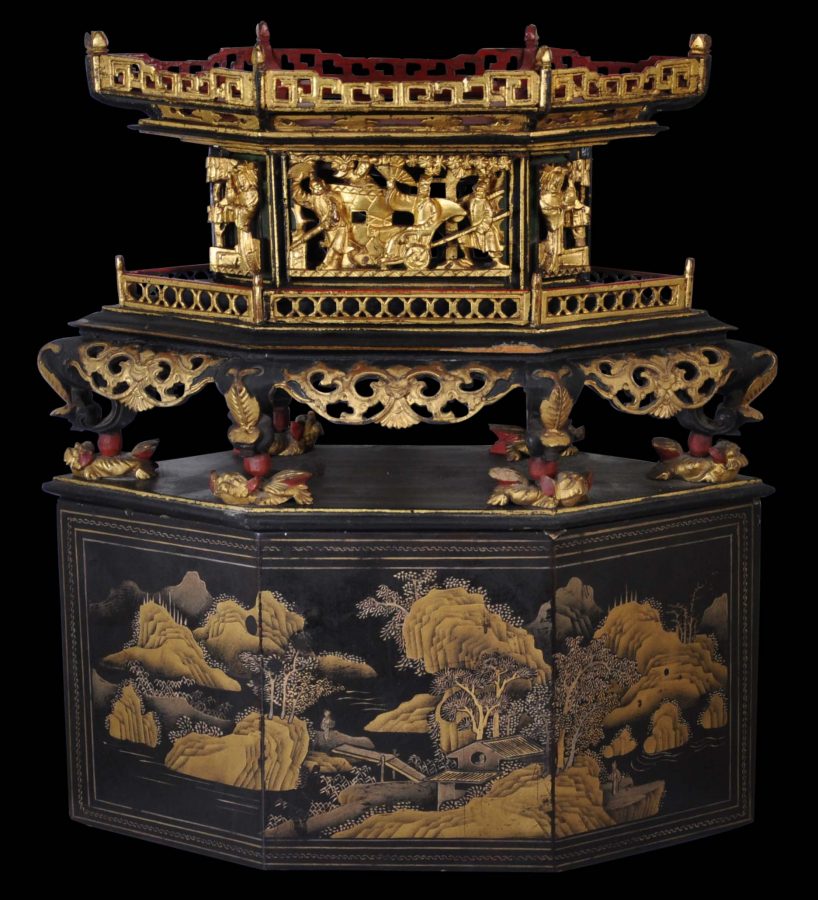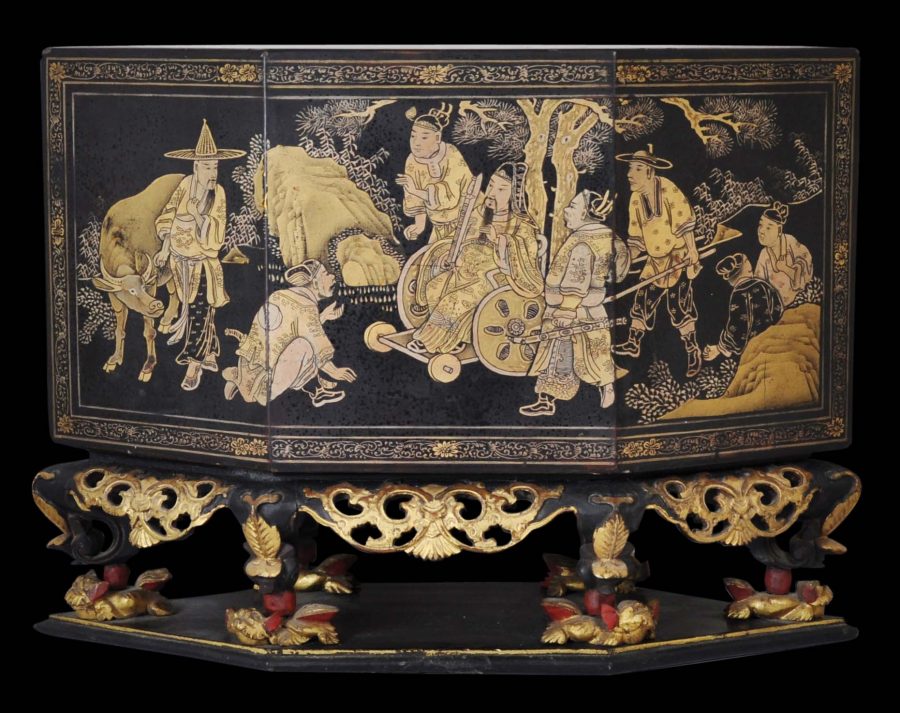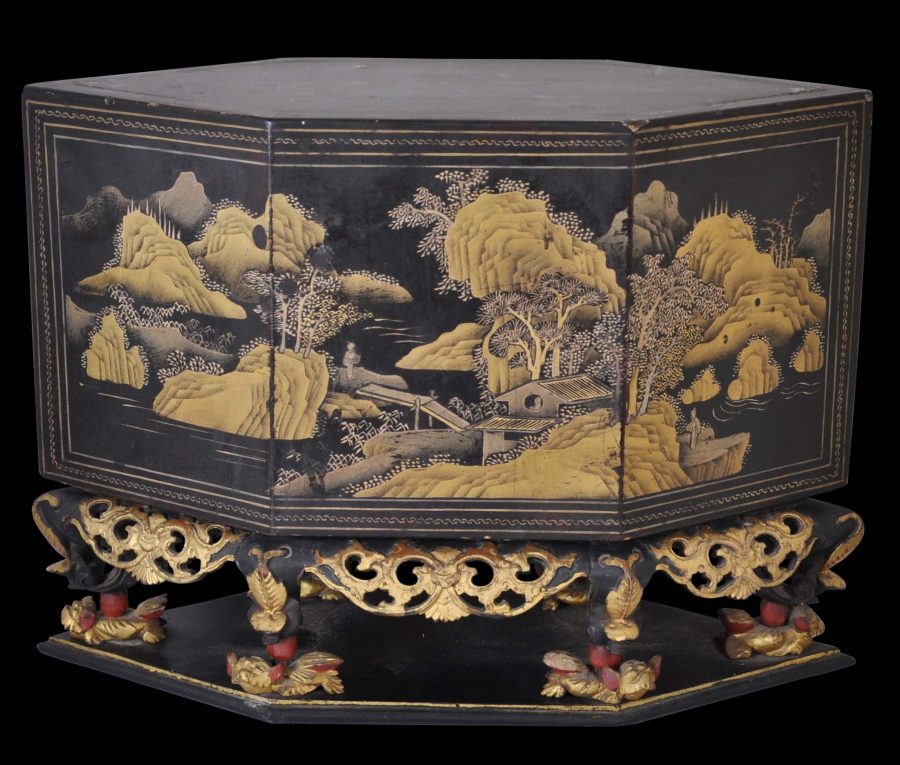Enquiry about object: 5673
Straits Chinese Gilded & Lacquered Wooden Offering Box (Chanab)
Used by the Straits Chinese (Babas/Nonyas) of the Straits Settlements of Penang, Malacca & Singapore & also the Peranakan Chinese of Indonesia. Possibly made in Southern China for this export market. 19th century
length: 34cm, height (when closed): 25cm, height (when open): 39.5cm, width: 13cm
Provenance
UK art market
This six-sided chanab, executed in black and red lacquered and gilded pinewood and with a black and gold lacquered cover, is intricately carved with typically Chinese scenes including a representation of the Jade Emperor also known as the God of Heaven or the god of all gods (Yu Huang or Yu Di) being pulled in a wheeled sedan chair, and offerings including pomegranates.
It has six feet, each of which sits on movable, splendidly carved Buddhistic lions.
When not in use, the cover is placed over the chanab to protect it.
The cover is lacquered unusually finely in black and gold on all sides with an idealised tranquil mountain, stream and village scene on one side. On the other is a scene from Chinese legend with eight figures including that of the Jade Emperor.
A similar chanab is in Khoo (1996, p. 82) and in use, on p. 84. Others are illustrated in Ho (1994, p. 91); Tan (1993, p. 9); and Lee & Chen (1998, p. 46). Chanabs used by Straits and Peranakan Chinese of Southeast Asia tended to be of the hexagonal variety (such as the one here). Chanabs used by the Hokkien in China usually were square.
The chanab was placed in the centre of each Straits Chinese family’s sam kai altar, the most important altar in the family home. The sam kai altar was used for important ceremonies, particularly weddings. When not in use, the six-sided black lacquered box was placed over the chanab to protect it.
Called a beet-chien in Penang and a chien-arb or chanab in Malacca and Singapore, bamboo skewers of crystallised papaya were stood on a pewter rack that was placed on top of the chanab as offerings for the Jade Emperor.
The condition of the chanab here is very good. There are no losses to the carving that remains but there would have been some extra carved detailing at the both ends of the mid-section of the upper section of the chanab and these are no longer present.
References
Khoo J.E., The Straits Chinese: A Cultural History, Pepin Press, 1996.
Ho, W.M., Straits Chinese Furniture, Times, 1994.
Tan, C.B., Chinese Peranakan Heritage in Malaysia and Singapore, Penerbit Fajar Bakti, 1993.
Lee, P. and J. Chen, Rumah Baba: Life in a Peranakan House, National Heritage Board, Singapore, 1998.





